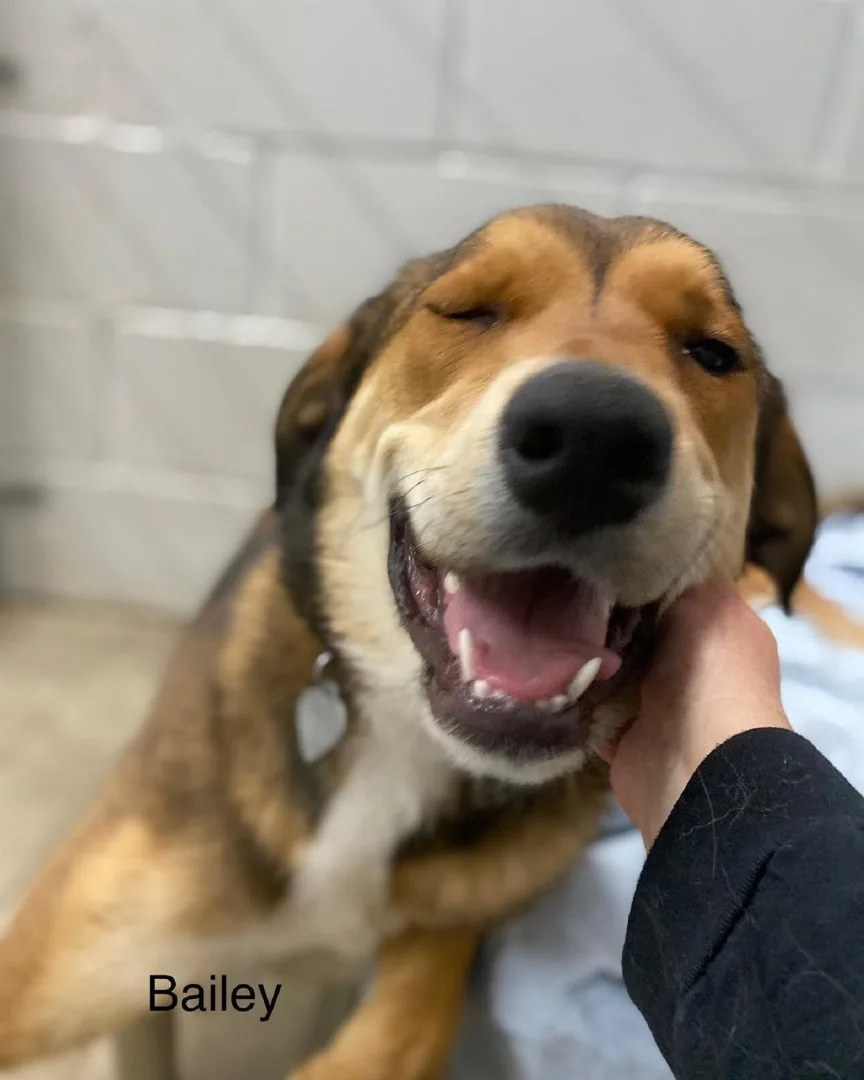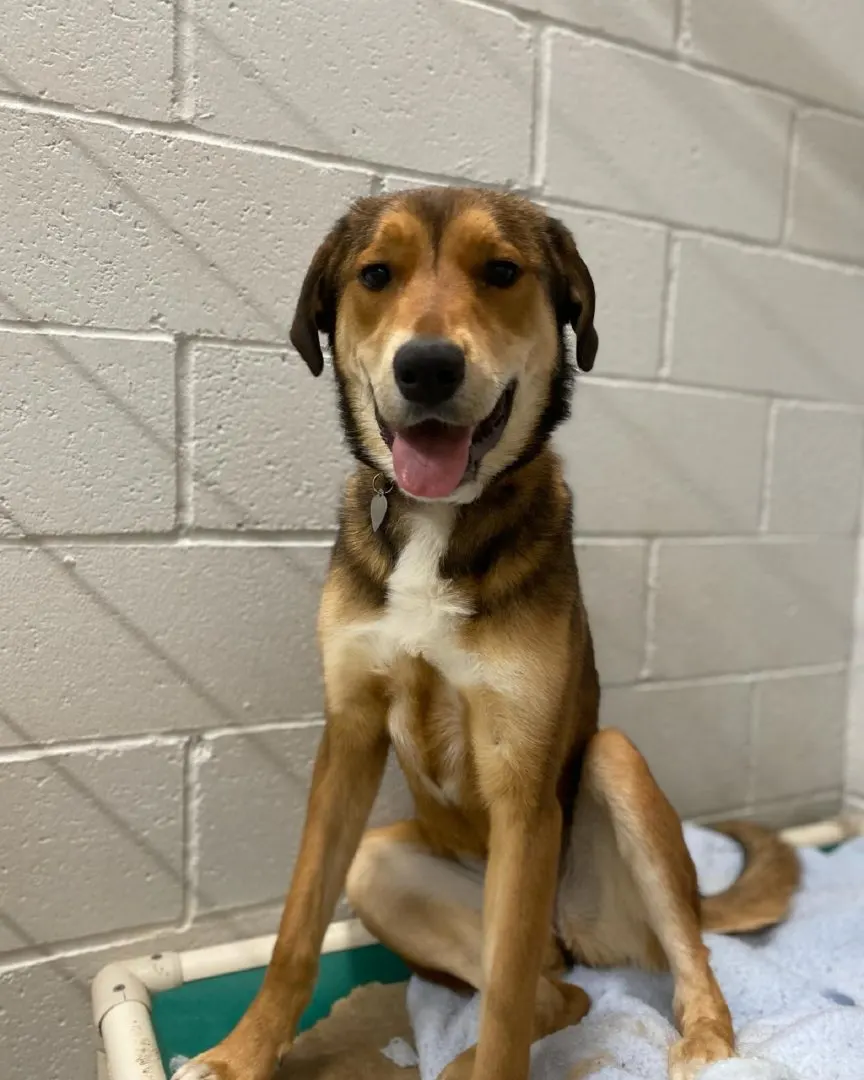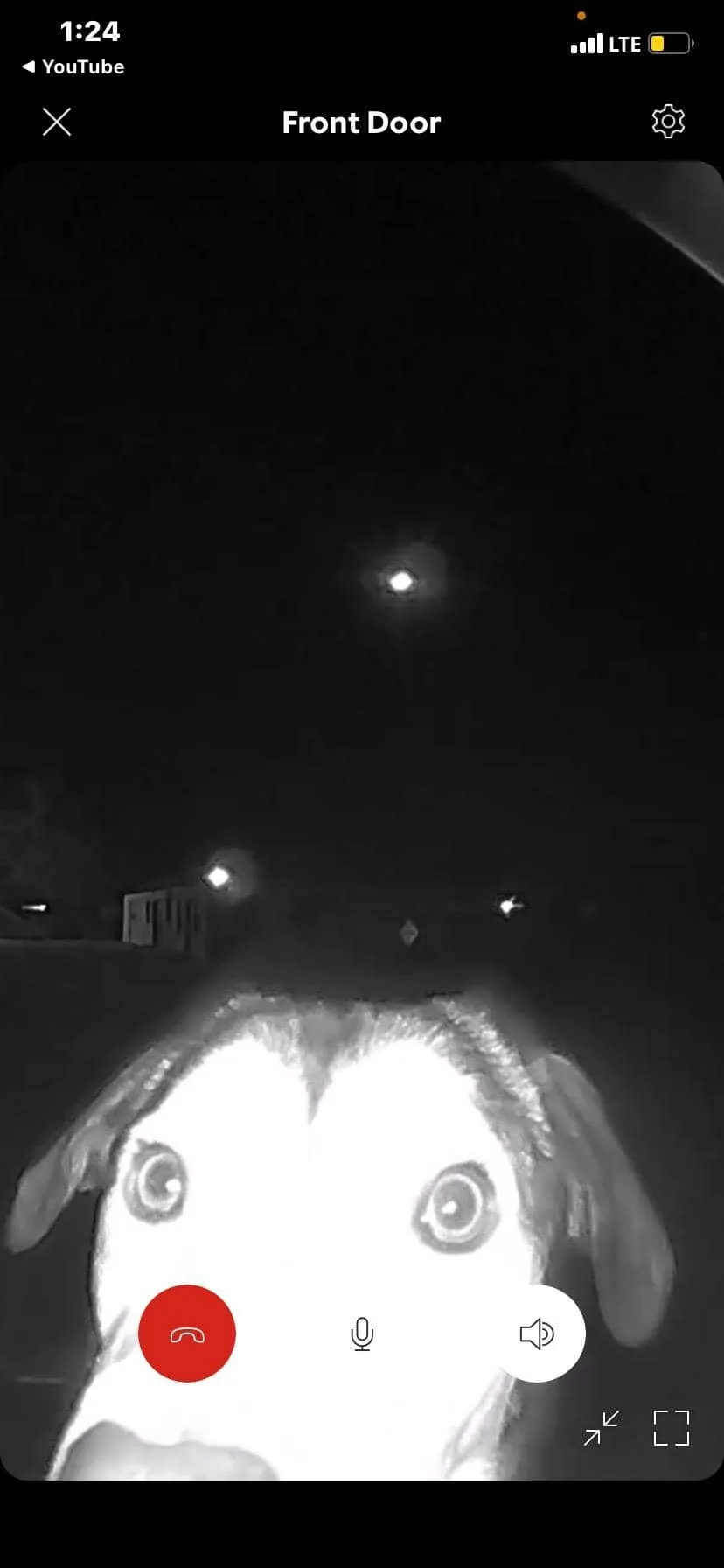“Some dogs are smarter than we give them credit for. How the heck did she know how to go 10 miles back to the shelter?,” said Loretta Hyde, the founder of the Animal Rescue League of El Paso.
The staff of this animal rescue shelter in Texas were all stunned when their former rescue dog named Bailey rang their Ring doorbell at 1 AM asking to be let in.
They couldn’t believe that this dog was able to find her way back to the shelter and then ring their doorbell to let them know that she was there.
Despite the constant presence of dogs in my daily life, stories such as this still manage to fascinate me and surprise me with how smart dogs can actually be.
Bailey Walked 10 Miles

Bailey is a Shepherd/Husky mix, which, until recently, was the ARL’s longest resident. She won the hearts of each staff member, as she had spent the most time with them during her long stay at the shelter.
They loved her and she loved them.
Bailey finally found her forever home, and everyone at the shelter was delighted with the news.
They hoped to see her sometime in the future if she would maybe visit the shelter with her new dad, but they never imagined that almost a month after her adoption, she would return to them.
And, no, she wasn’t abandoned by her family or something like that. What actually happened is quite unbelievable.

According to Bailey’s dad (Micah) and the shelter’s founder (Hyde), in the utter moment of confusion and unfortunate course of events, Bailey got spooked on her walk with her dad and ran away.
“He chased her for two miles, and she got out of his sight. That’s when he let us know that Bailey’s on the loose,” Hyde said for USA Today.
They immediately posted about Bailey on every one of their social media outlets, urging everyone to notify them if they saw her anywhere.

They received tons of messages, and they soon figured out that although Bailey had gone missing, she wasn’t entirely lost, and she seemed to know her way around.
“I told one of the ladies that was out looking for her, ‘She’s on her way back to the shelter!’, and she said, ‘Loretta, you’re crazy,’” Hyde said.
She Rang The Doorbell At 1:15 AM, Saying She Wanted In

The truth was, that Loretta was right.
Three days after she went missing, Bailey found her way back to the shelter, which was almost 10 miles from where she had disappeared.
To everyone’s surprise, she came to the front door and rang the doorbell, asking if she could come inside.
Since it was possible to talk through the camera, the staff said ‘Bailey’, and she immediately went to the camera, poking her head, and almost like saying ‘I’m here, let me in!’.
“Bailey is now safe. To all those who searched, spotted, called, hoped — we thank you. As we knew, dogs are incredible. Bailey made her own way back to ARL, and rang our ring doorbell at 1:15 am saying she wanted in. Staff rushed to the shelter and put Bailey in her run. She was very happy, and we were too,” the rescue posted on their Facebook profile.
It was incredible how she managed to find her way back to the shelter. She was three days without water and food, so naturally they welcomed her with open arms.
As soon as they made sure she was completely okay, they notified Micah to let him know that Bailey was safe.

He hurried to get to the shelter. Hyde notes that he never stopped looking for her, and was over the moon to have her back.
“It’s a happy ending that shows how not all shelters are bad,” Hyde said.
If you’ve ever been greeted by an unexpected puddle of vomit from your furry friend, you know the worry it can bring. Your dog’s puking episodes can be concerning and often leave you wondering about the underlying reasons. Understanding why your dog is puking is essential for their health and your peace of mind.
It’s not uncommon for dogs to have an upset stomach now and then, leading to vomiting. Various factors, from dietary indiscretions to underlying health issues, can trigger these episodes. As a responsible pet owner, being aware of the potential causes can help you navigate your dog’s well-being more effectively. So, let’s take a closer look at the possible reasons behind why your dog may be experiencing these unsettling moments.
Understanding the Common Reasons for Dog Vomiting
Dietary Indiscretion and Food Allergies
When your dog eats something they shouldn’t – like human food, spoiled food, or trash – it can upset their stomach and lead to vomiting. Food allergies can also trigger vomiting if your dog is sensitive to certain ingredients in their diet.
Gastrointestinal Obstructions
Sometimes, objects like bones, toys, or fabrics can get stuck in your dog’s digestive system, causing blockages that result in vomiting. If your dog has a habit of chewing on or swallowing non-food items, it’s essential to monitor their behavior to prevent this issue.
Toxins and Poisonous Substances
Accidental ingestion of toxins such as plants, household chemicals, or medications can lead to vomiting in dogs. Make sure to keep harmful substances out of your dog’s reach to avoid these dangerous situations.
Viral or Bacterial Infections
Infections caused by viruses or bacteria can also be culprits behind your dog’s vomiting. Keep an eye out for symptoms like lethargy, diarrhea, or loss of appetite, and consult your vet if you suspect an infection.
Remember, understanding these common reasons for dog vomiting can help you address the issue promptly and ensure your furry friend’s well-being.
Signs Your Dog May Be About to Vomit
Pre-Vomit Behavior in Dogs
When your dog is about to vomit, you may notice some common signs to look out for. These signs can include excessive drooling, licking their lips more than usual, restlessness, or trying to eat grass. Keep an eye on these behaviors as they could indicate that your furry friend is not feeling well and might vomit soon.
Recognizing the Different Types of Vomit
It’s essential to recognize the different types of vomit in dogs to understand their condition better. These can vary from undigested food to bile or even blood. If you notice any distinct colors, textures, or unusual contents in your dog’s vomit, it’s crucial to take note as it can provide valuable information to your vet about what may be causing the issue. Be observant of these variations to help your vet diagnose and treat your dog effectively.
When to See a Veterinarian
Identifying Serious Symptoms
If your dog is experiencing any of the following, it’s time to seek help from a veterinarian:
- Persistent vomiting for more than a day.
- Blood in the vomit.
- Signs of distress or pain.
- Lethargy or weakness.
- Vomiting alongside diarrhea.
- Loss of appetite for more than a day.
The Importance of Timely Vet Visits
Remember, your dog’s health is a top priority. Don’t hesitate to visit the vet if you notice concerning symptoms. Early intervention can prevent complications and ensure your furry friend gets the care they need promptly. It’s always better to be safe than sorry when it comes to your pet’s well-being.
Home Remedies and Care for a Vomiting Dog
Managing Diet During Recovery
When your dog is recovering from vomiting, it’s essential to manage their diet carefully. Start by withholding food for 12-24 hours to give their stomach a break. After this period, introduce bland, easily digestible foods like boiled chicken and rice in small portions. Avoid fatty or spicy foods that could irritate the stomach further. Gradually transition back to their regular diet once their stomach settles.
Hydration and Electrolyte Balance
Keeping your dog hydrated is crucial during recovery. Provide access to clean water at all times and encourage them to drink. If your dog is reluctant to drink, you can try offering ice cubes for them to lick. Electrolytes are also essential, especially if vomiting has been persistent. You can offer a small amount of diluted chicken or beef broth to help replenish electrolytes. Monitor their water intake to ensure they stay hydrated throughout the recovery process.
Preventive Measures to Avoid Future Episodes
Proper Dietary Habits
To prevent future episodes of vomiting in your dog, maintain proper dietary habits. Ensure your dog’s food is suitable for their age, size, and breed. Avoid sudden changes in their diet and refrain from feeding them table scraps, as these can lead to digestive issues and vomiting. Consistency in feeding times and portions can also help in maintaining your dog’s digestive health.
Regular Health Check-Ups and Vaccinations
Regular health check-ups and vaccinations are crucial for your dog’s overall well-being and can help prevent illnesses that may result in vomiting episodes. Schedule annual veterinary visits to monitor your dog’s health and address any concerns early on. Stay up to date with vaccinations as recommended by your veterinarian to protect your dog from various diseases that could lead to vomiting and other health issues.
Remember, implementing these preventive measures can go a long way in ensuring your dog stays healthy and happy, minimizing the likelihood of future episodes of vomiting. By being proactive in your approach to your dog’s diet and healthcare, you can provide them with the best chance at a vibrant and illness-free life.
Conclusion
So, now you know why your dog might be puking. It’s essential to pay attention to their diet, habits, and overall health. By taking preventive measures like proper feeding, regular vet check-ups, and keeping an eye out for any unusual symptoms, you can help your furry friend stay healthy and happy. Remember, a little care goes a long way in ensuring your dog’s well-being. So, next time your dog starts to vomit, you’ll be better prepared to handle the situation and keep them in good shape.
Frequently Asked Questions
What are common reasons for dog vomiting?
Dogs may vomit due to dietary indiscretion, food allergies, obstructions, toxins, or infections.
How can I prevent my dog from vomiting?
Prevent vomiting by maintaining proper dietary habits, avoiding sudden diet changes, feeding table scraps, ensuring consistent feeding times and portions, regular health check-ups, and vaccinations.
Why are regular veterinary visits important?
Annual veterinary visits help monitor your dog’s health, address concerns early, and prevent illnesses that may lead to vomiting.
[no_toc]

Hey there, I’m Janet Brooks, a dog-loving student from California. I’m all about helping pups in need, especially those without homes. Me and my awesome friends work together to give shelter and love to stray dogs. Oh, and I also write blogs about dogs to share helpful info.